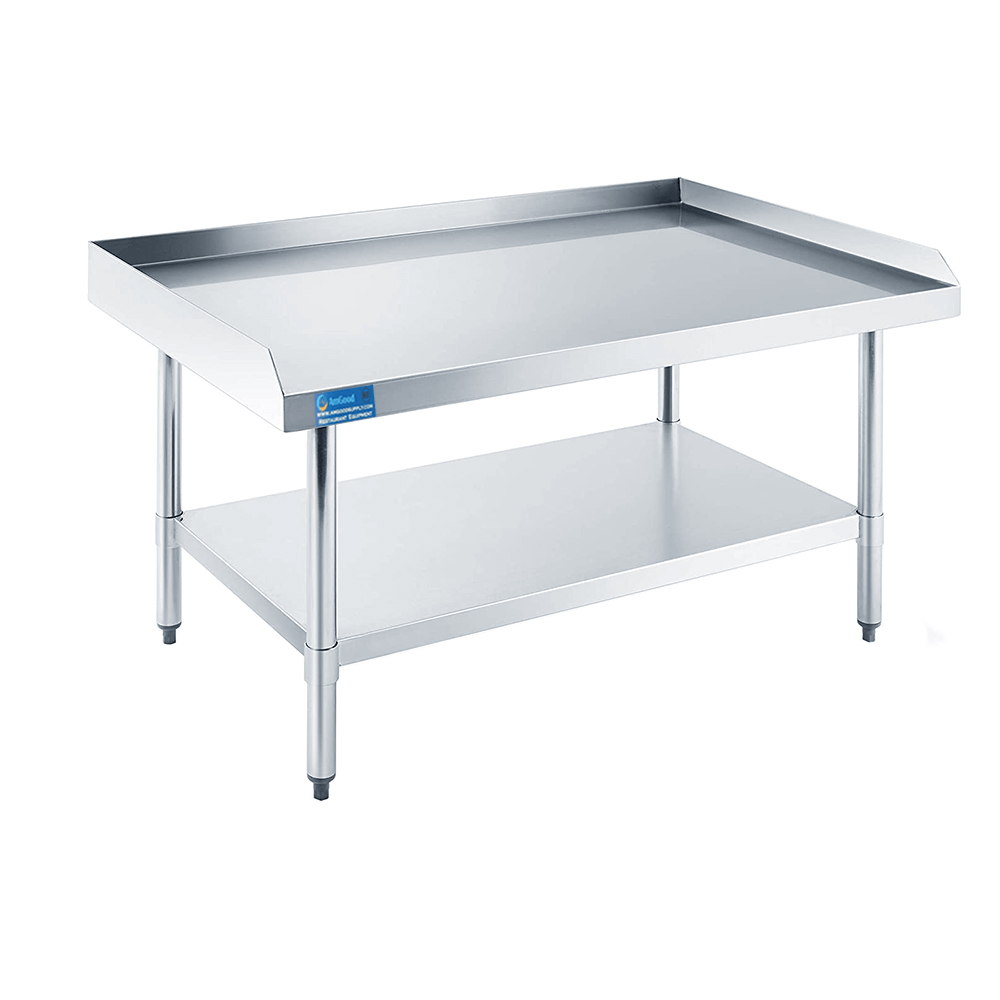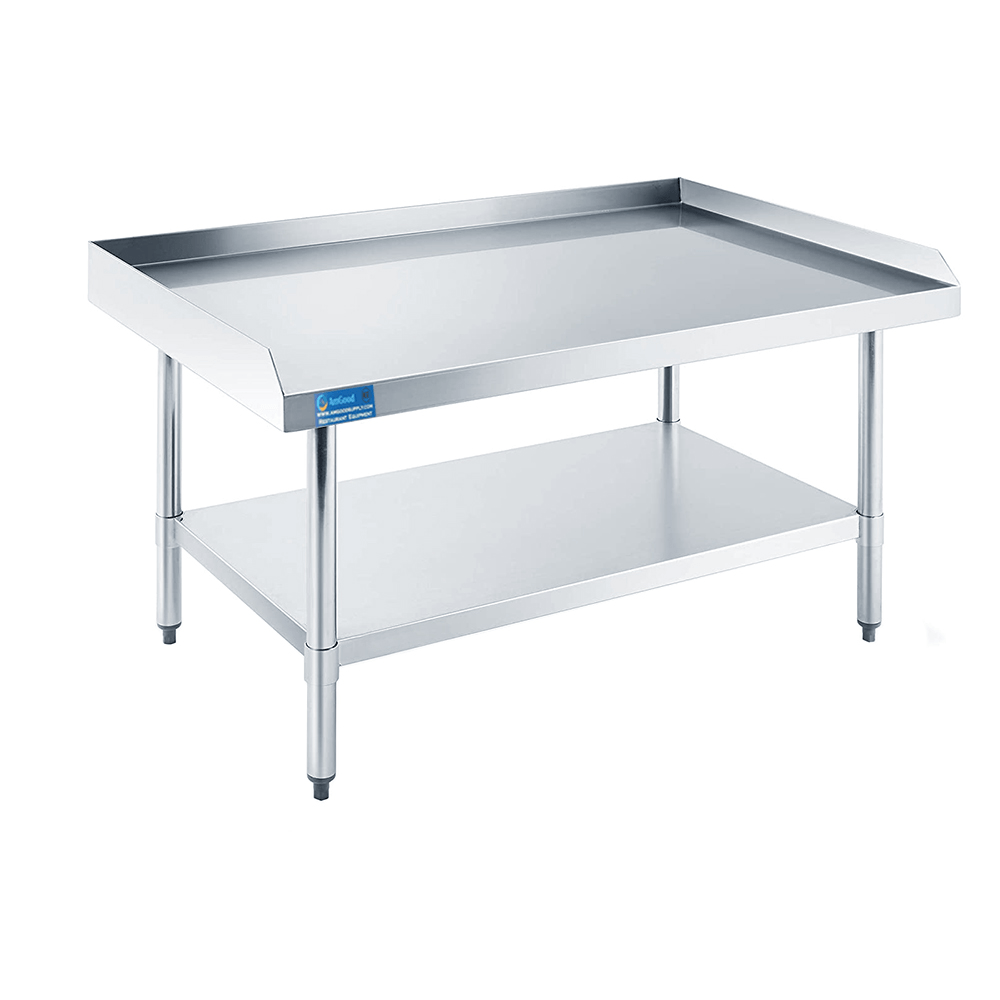Steel kitchen equipment or furniture made of the most sturdy materials is pegged as the highly demanded option for a restaurant. The list of goods in this category includes a wide variety of elements, such as metal shelving and rack systems designed for the comfortable storage of dishes, kitchen utensils, accessories, or a stainless steel table for a safe food prep routine. Mostly, the best are used for processing food products and preparing food on smooth working tops. However, they also serve as an additional surface for the short-term storage of objects and items. They are needed in any kitchen, as well as in stores where products are cut and food is served. Household appliances and devices, such as microwave ovens or blenders, are also placed on them.

Let’s briefly list the key ways of using metal equipment:
- primary processing of fruits and vegetables;
- meat and fish processing;
- preparation of semi-finished products;
- the pastry and baked goods preparation;
- waste collection or storing dishes, etc.
Such a wide range of applications allows you to classify a stainless steel work table in the category of the most versatile and needed one. It assists the staff and supports order and hygiene.
Stainless steel care and upkeep tips
Food establishments that are able to provide their visitors with the fastest and highest quality service always turn out to be winners, stand out from the crowd, and deserve the highest level of trust and loyalty. Converting a casual visitor into a loyal client is possible if the working zone is wisely and efficiently arranged. At the same time, taking care of the hygiene of the surfaces on which the personnel works every day, including each stainless steel work table, is critical for retaining the quality of dishes.
Stainless steel is a mix of several elements. Its main feature is increased resistance to corrosion (compared to other metal types). Therefore, caring for the stainless steel table is not a grueling task. It should simply be wiped with a specially designed solution for this purpose. If such treatment is regularly carried out, the surface will have its original appearance for a long time. Remember that abrasive substances are prohibited, so such cleansers must be excluded from maintenance. Chlorides and acids can also damage steel, and such deterioration won’t be easily eliminated.
Use soft pieces of cloth, as well as special compositions that do not contain substances prohibited in the care of steel. Old and stubborn stains that have already hardened should be soaked and then removed with a dry cloth. If the steel equipment is in a closed area and is constantly used for its purpose and exposed to moisture and aggressive environments, in order to prevent wear and tear, it is vital to regularly use specialized commercial products to restore the protective properties of steel. Any mechanical damage will destroy the oxide film and in such a scenario steel may be subjected to corrosion. Its protection must be planned in advance.
